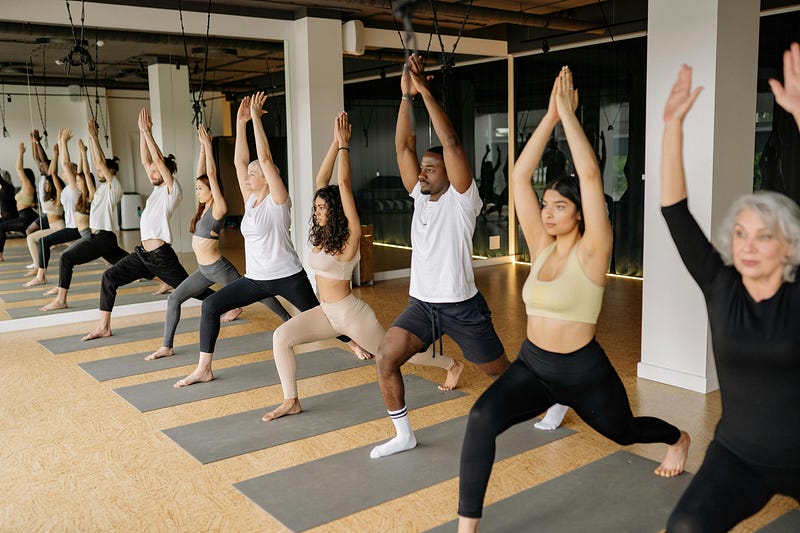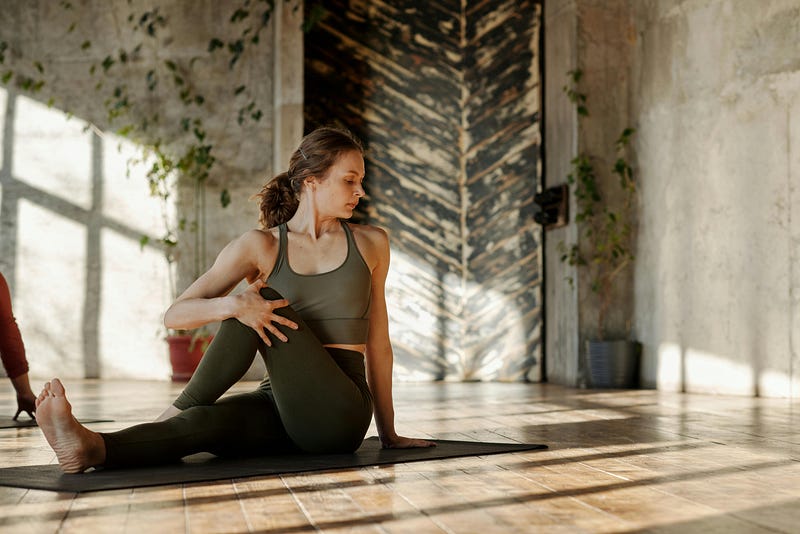Introduction: Why Stretching Matters for Tight Hamstrings
Stretching ensures that hamstrings remain flexible and the muscles healthier. Tight hamstrings could lead to pain, poor flexibility, and even injury. In a way, stretching can help to overcome these problems and offer you good flexibility to improve your functional performance physically. This article will focus on effective stretching exercises associated with tight hamstring muscles, aiming to reduce muscle tightness and restore function.

Understanding Tight Hamstrings
Anatomy of the Hamstring Muscles
The hamstrings are a group of three muscles located at the back of the thigh. They include the biceps femoris, semitendinosus, and semimembranosus. These muscles go a long way in acting as a driving force as you take your movement, especially in the bending of your knee and extending your hip. Understanding their anatomy will help to pinpoint how tight hamstrings affect your mobility and lead to pain.
Problems from Tight Hamstrings
Some of the problems tight hamstrings can often cause include persistent pain, stiffness, reduction in flexibility, self-care disability, or diminution in quality of life related to this issue. Relief from tight hamstrings due to hamstring exercises is important in improving life quality and daily comfort.

Benefits of Tight Hamstring Stretching Exercises
Greater Flexibility and ROM
Increases flexibility and range of motion in hamstrings: With regular incorporated stretching, there is increased flexibility in the hamstrings. Better flexibility assures free movements without much friction, hence avowing injury during the physical exercises.
Pain — and Discomfort Reduction
Stretching helps relieve tightness and pain in muscles. Hamstring muscles are lengthened in stretching; this will ease the pain one is experiencing and also prevent further straining; this will ensure a pain-free and active life.
Improved Posture and Alignment
Stretch of the hamstring will help to do a realignment of the imbalances that have occurred due to tightness of the muscle. Proper stretching, therefore, will enhance proper postures and alignments, further improving body mechanics, and minimization of stress in other muscles.

Injury Prevention and Muscle Imbalance
Stretching on a regular basis becomes preventive of injuries because it maintains muscles in the right balance and flexibility. This will also help in preventing compensatory actions that may result in muscle imbalances and further stresses on the body.
Hamstring Stretch — Level 1
Sit on mat with one leg straight and one folded underneath at knee. Reach towards the toes of the straight leg maintain a straight back. Hold stretch for 15–20 seconds and repeat, alternating legs.
Facilitates natural, yet deep stretch of hamstring muscles. Avoid over-reaching or rounding your back, to prevent strain in low back.
Seated Hamstring Stretch
Procedure: Sit with your legs stretched in front of you. Lower your torso gradually from the waist to reach your feet with your hands. Pause for about 15–20 seconds and return.
Benefits and Common Mistakes: The flexibility is developed. Bouncing should be avoided, back kept flat.

Standing Hamstring Stretch
Instructions: Stand up and place one heel on a butt-height surface, such as a chair. Slightly lean forward with your leg straight. Hold for 15–20 seconds and switch legs.
Benefits and Tips: This is a good stretch for the hamstring while being safe for balancing. This will allow for the creation of an alignment so as to a good stretch while preventing injury.
Hamstring Stretch using a Strap
Instructions: Recline and perform a laying hamstring stretch by lying flat on your back with one leg on the floor. Extend your other leg straight with a strap around the top of your foot, pulling the strap toward your body. Hold for 15–20 seconds and repeat exercise on other leg.
Benefits and Safety Tips: Straps increase the intensity of the stretch while allowing for more flexibility. Be easy with pulls so as not to injure a muscle with the stretch.

Incorporating Hamstring Stretches into Your Plan
Tips on How to Include hamstring Stretches into Your Day
These exercises of stretching would surely help a lot in alleviating the tightness of those hamstring muscles to a great extent and would also aid in contributing toward muscle flexibility and total muscle health. Set aside some of your routine time so that you can perform these stretches. The best time would be in the morning and at night. Try to hold in for duration of 15 to 20 seconds in each stretch and repeat it for 2 or 3 times. Make it a routine activity; hence, you only have to be dedicated and make these stretches on a daily basis.
Combining Other Exercises with Hamstring Stretches
Always ensure that the benefits of hamstring stretches are maximized through a combination of flexibility and strength exercises. Stretching combined with, for example, calf raises on step or hip flexor stretches, greatly improves overall flexibility and in turn enhances overall strength of the lower body. Such a program ensures that all muscle groups are adequately taken care of, which in turn enhances mobility and reduces the risk of injury.

Common Mistakes and How to Avoid Them Overstretching and Its Dangers
One of the most significant hazards involved with stretching is overdoing it. It may cause muscular strain or injury. Try not to push the muscles too much, but rather stretch to a point of mild tension, not pain. Increase otherwise the intensity of your stretches gradually with an improvement in flexibility.
Improper Technique and Posture
Poor technique can reduce the effectiveness of your stretches and bring you closer to injury. Ensure that you are maintaining the right posture for each stretch. For example, keep your back straight and do not allow bouncing. Consider using a mirror to check your form or consulting a fitness professional if you’re not sure.
Ignoring Pain Signals
Listen to your body always. Stretching should never hurt. If you have stabbing pains, stop immediately and see a healthcare professional if you need to. Light stretching should reduce feelings of tension, not increase them.

Other Muscle Wellness Tips
Frequent Rests and Movements
Things that would be considered and that would support the general well-being of your muscles be daily breaks and movement. You see, too much sitting will only sharpen muscle tightness. Tools like BreakTimers should be used, they will signal you to stand up and stretch. This will keep you active and ensure stiffness does not set in .
Ergonomic Adjustments and Hydration
Adapt your working and living environment to muscle condition cues. Ensure your chair is adjusted and that you are well set up in your workspace to avoid any strain on the body.
Lastly, remember to drink enough water a day. Sufficient hydration is necessary for optimum muscle condition as it ensures your muscles are supple and functioning well to ,support muscle stretch-ability

Conclusion
Overview of Why it is Essential to Do Hamstring Stretching Exercises in the Hamstring
Stretching your hamstring regularly will help maintain flexibility and reduce muscle tightening. Some of these exercises, if included in the workout routine, can create clear differences in terms of mobility and the muscle as a whole.
Motivation to Add Stretches to Your Daily Routine
You should start adding these stretches to your daily activities to help reduce the discomfort in your muscles. It is through doing the exercises that you are going to achieve greater flexibility and comfort in your muscles.
Call to Action: Do These Activities and check BreakTimers
Include these stretching exercises in your routine today and use the BreakTimers to track the hours for sitting, moving, and your stretching exercises. Being equipped with this tool will keep you abreast of muscle health and productivity.
Call to Action
Share Your Stretching Experience
We’d love to hear how these hamstring stretches have been helping you. Comment below and let us know about your progress.
Visit BreakTimers for More Resources
Look at additional tips and tools to further enhance your muscle health and productivity in using BreakTimers.
Check Related Articles and Exercises.
External Resources:
- MedicalNewsToday: This article outlines the best stretches for tight hamstrings, including detailed instructions for each stretch. It discusses the importance of flexibility and provides tips on how to perform the stretches safely. Read more here.
- . Surrey Physio: This resource lists five effective exercises to stretch your hamstrings, with explanations on how to perform each stretch. It emphasizes the significance of regular stretching for overall health and athletic performance. Explore the exercises here.
- . PureGym: This article features six of the best stretches for tight hamstrings, including both dynamic and static options. It provides step-by-step guidance on how to perform each stretch effectively. Check it out here.
- Yoga Journal: This resource offers seven essential stretches for tight hamstrings and hip flexors, explaining how to perform each stretch and the benefits they provide. Learn more here.
- Peloton: This article discusses six effective stretches to loosen tight hamstrings, including dynamic and static options. It provides a brief overview of each stretch and its benefits. Read the article here.
